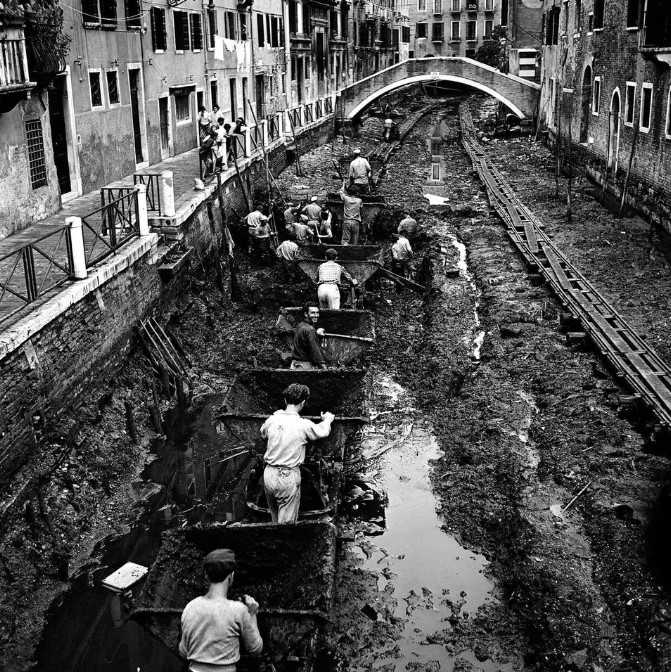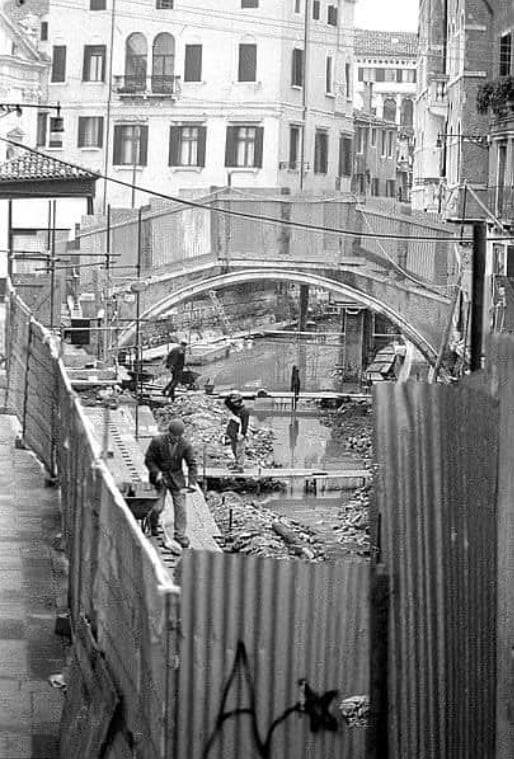Restoring Venice’s Heart: The Draining And Cleaning Of The Grand Canal, 1956
In 1956, Venice witnessed an extraordinary event that captured global attention: the draining and cleaning of the iconic Grand Canal. This ambitious endeavor, known locally as the “Svolte di Popolazio” or People’s Revolution, transformed the city’s historic waterways.
It was a huge effort to protect Venice’s cultural heritage and make its famous canals more beautiful. This event uncovered a hidden side of the canals and showed how Venice is dedicated to preserving its historic buildings for future generations to enjoy.
The decision to preserve Venice’s canal

Over the centuries, Venice’s canals filled with silt, debris, and waste, creating unsanitary conditions and endangering the city’s historic architecture. To address these problems and restore the waterways, a decision was made to drain and clean the canals.
This effort aimed to bring back the canals’ former beauty and preserve Venice’s unique culture and historical identity.
The draining and cleaning of the canals required meticulous planning, coordination, and labor-intensive work by engineers, workers, and volunteers. The process was particularly delicate because the canal floors could hide treasures such as lost artifacts, sunken boats, and centuries-old structures.
Great effort to drain and clean Venice’s canal

Massive pumps were set to work, tirelessly draining the water that had filled Venice’s canals for centuries.
As the water receded, Venetians and tourists gathered along the banks, eager to see what lay hidden beneath the surface. The once-bustling waterway revealed secrets that had been submerged for ages.
As the water level dropped, ancient architectural marvels emerged into view. Fragments of Roman columns, intricate stone carvings, and long-forgotten artifacts surfaced, leaving spectators in awe.
The historic buildings lining the canal revealed their foundations, giving experts a rare opportunity to inspect and repair any damage from the water and time.
While the exposed treasures delighted historians and archaeologists, the main purpose of the operation was to clean the canal and restore its former glory.
Workers meticulously scrubbed the canal bed, removing accumulated silt and debris. They carefully sifted through the sediments to retrieve any historically significant objects, enriching the city’s already vast collection even further.
Perlmutter’s camera captured the beauty and effort of the restoration process. His photos highlighted the contrast between the Venetian architecture and the exposed canal bed, set against the grandeur of the city’s palazzi.
These images encapsulated Venice’s essence, resilience, and the commitment of those involved in this monumental task.
As the cleaning operation wrapped up, the waters gradually returned. The rejuvenated Grand Canal reclaimed its place at the heart of Venice. The city breathed a collective sigh of relief, knowing its treasured waterway was revived and preserved for future generations.
The meaning of event

In 1956, the extensive effort to drain and clean Venice’s canals captivated both locals and tourists that showcased the Venetian people’s remarkable ingenuity and resolve. It underscored their deep commitment to preserving the city’s cultural heritage and safeguarding its distinct identity.
This ambitious project not only enhanced the cleanliness and beauty of the canals but also underscored the importance of conserving Venice’s architectural wonders for future generations.
Moreover, it served as a poignant reminder that beneath Venice’s picturesque exterior lies a rich history waiting to be explored, much like how Bill Perlmutter’s photographs have preserved and shared this legacy with countless individuals over the years.

